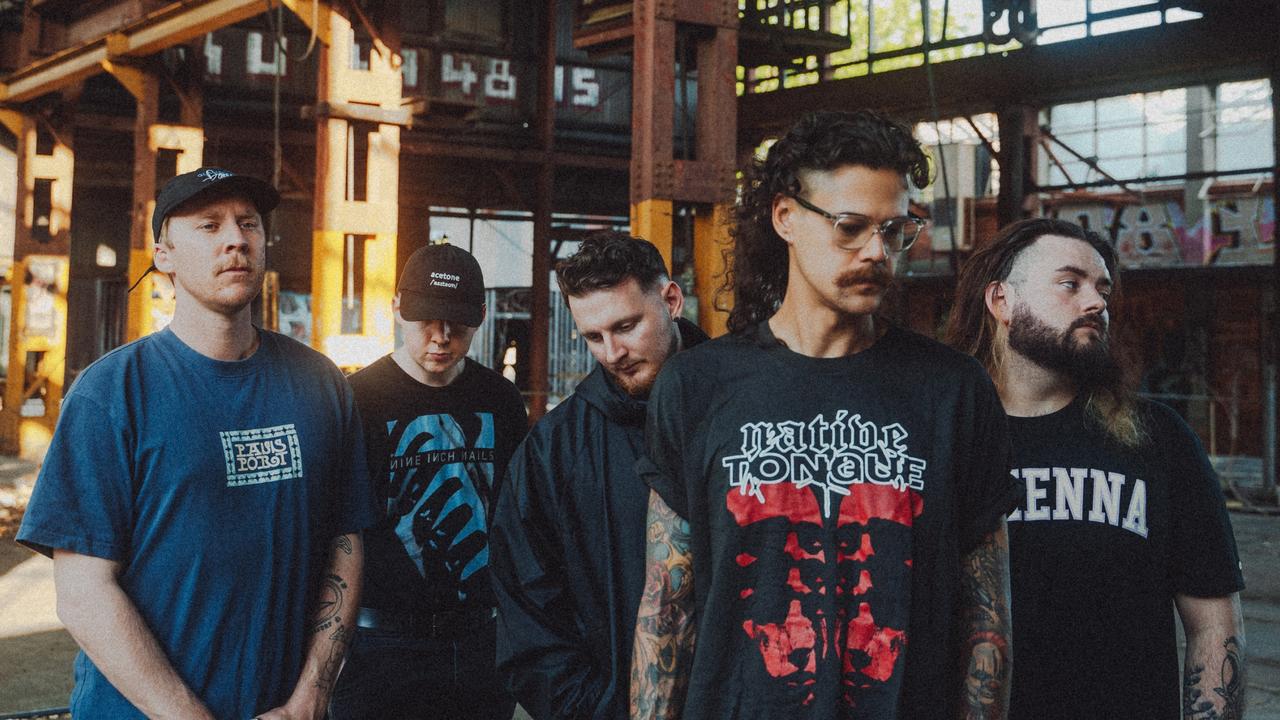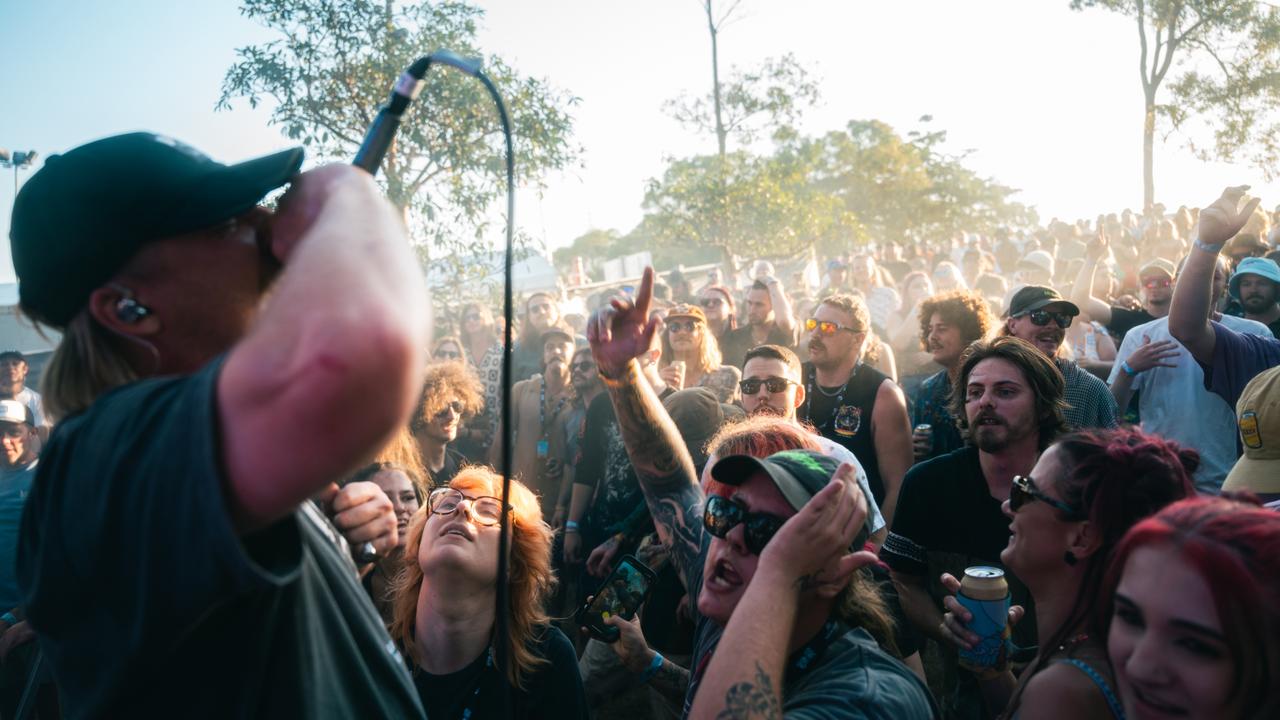Mackay’s WWI cenotaph at Jubilee Park: Why council used explosives
Residents rallied to fundraise $250,000 for its installation nearly 90 years ago. The Mackay Historical Society details why the council had to use explosives on it.
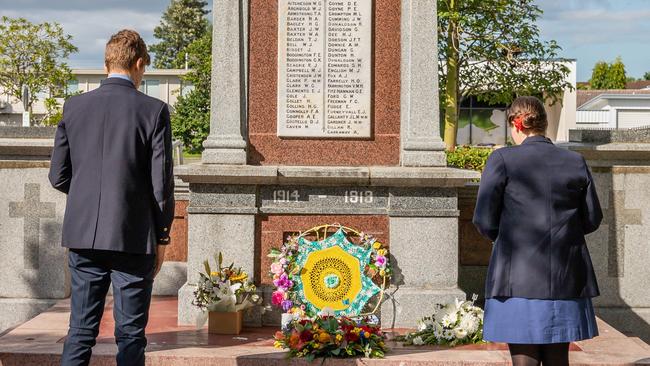
Mackay
Don't miss out on the headlines from Mackay. Followed categories will be added to My News.
The well-known World War I cenotaph in Jubilee Park on Alfred Street has been part of Mackay for more than 90 years but has surprisingly been in three different locations in its lifetime.
One of the earliest moves towards building the cenotaph occurred on May 17, 1927 with a public meeting held at the Mackay Town Hall in Sydney Street.
The meeting was attended by 42 people.
The meeting had been called at the request of the Returned Servicemen’s League Mackay branch so a “suitable memorial in honour of those brave men who laid down their lives for freedom and justice” could be built.
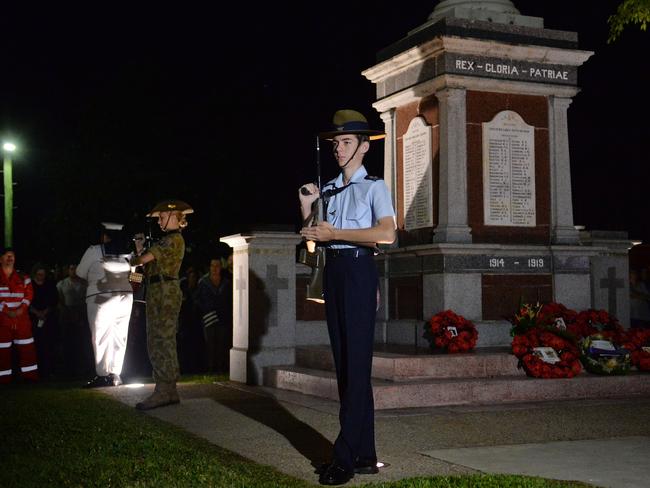
A committee was appointed which included the Mackay City Council Mayor Alderman George Milton, WA Amiet, TS Beatty, O Brighton, J Burns, CR Croker, CR Cameron, GH Hoffman, G Johnson, TG Mulherin, WG Porter, D Pratt and HA Webster.
More stories:
Toni Childs lends her voice to Hub for our Heroes campaign
‘You didn’t dare ask Dad about the war, it was just taboo’
‘The appreciation of our past is just going to explode’
The Daily Mercury later reported on May 25, 1927, that a fundraising campaign consisting of a “canvas of the town” had been consented to raise funds for the cenotaph.
Country donors were invited to send their contributions to the Daily Mercury or to Secretary of the Soldiers’ Memorial Fund, Mr RF Moore.
Reported fundraising events were a garden fete on September 10, 1927 at Miss Cameron’s home at ‘Killearn’, a Cricket Match (Carlton B versus South Ward) on October 29, 1927, a Mackay Turf Club race meeting on October 29, 1927, a gala day on December 10, 1927 and a Grand Euchre Party and Dance at the Britannia Hall on February 10, 1928.
The Mackay Bowling Club, on October 29, 1927 set an entrance fee for the green of 5 shillings (about $20 in modern currency) for the day to assist with fundraising.
The drawing of a “winning number” for a case of Melbourne Bitter beer donated by W.H. Paxton & Co. Ltd had occurred by December 27, 1927.
More stories:
VC recipient joins battle to develop Kinchant Dam centre
‘I’m deeply supportive of both projects’: Dawson MP
Sir Peter Cosgrove backs ‘continent leading’ heroes hub
A donated silver cigarette case, containing cigarettes, was raffled during a soldier’s reunion on December 31, 1927. Local businesses and organisations also donated funds to the appeal.
It was reported in the Mercury on June 14, 1927, that the fundraising committee aimed to raise £3000 (about $249,000 today) for the cenotaph.
Another appeal, reported as the “5/- Fund”, hoping to raise an additional £250 (about $20,000) was later reported on March 21, 1929.
The purpose of this appeal was to fund the completion of the cenotaph, its approaches and surrounding gardens.
Another appeal for additional funds was to be later made by Ald Milton in the Daily Mercury on November 2, 1929 to meet obligations of about £250.
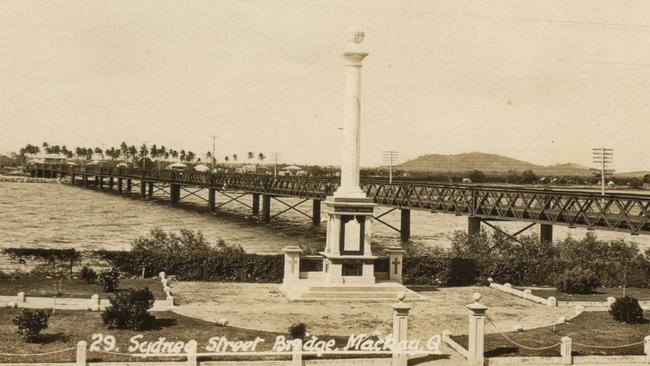
A site in River Street opposite the Mackay Customs House had been decided by the Soldiers Memorial Committee for the memorial and its surrounding Small Park by June 14, 1927.
A proposed design for the cenotaph by architect Mr S Harvey of Townsville had been accepted by July 11, 1928 and a picture of the design was later published in the Mercury on July 30, 1928.
More stories:
‘I cried privately for days into weeks which turned into months’
HUB FOR OUR HEROES: Kinchant Dam hub will draw tourists
The successful tenderer for the construction of the cenotaph, Melrose and Fenwick based in Mackay, had been accepted by August 1, 1928.
Tenders had also been received from Brisbane, Ipswich and Rockhampton.
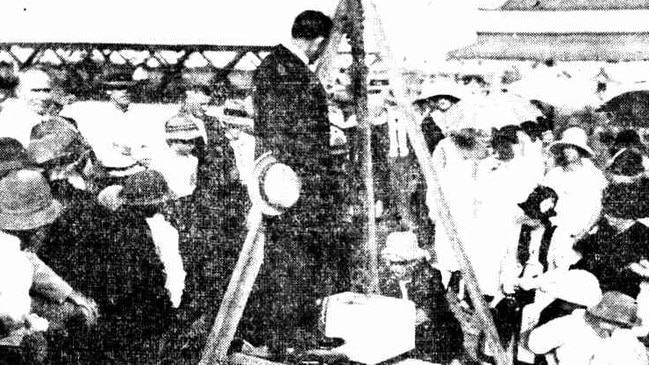
Initial construction of the cenotaph, consisting of excavations at the River Street site, began on September 12, 1928.
The foundation stone was to be later laid at the River Street site on November 18, 1928 by Ald Milton and was to be blessed by Reverend AD Thorpe.
The laying and blessing of the foundation stone was to be attended by a large gathering of people.
More stories:
WIN: Temporary hub for our heroes in Mackay CBD
‘You don’t get that sort of camaraderie anywhere else’
Calls for additions, corrections and examining for a list of deceased soldiers to compile a complete list of names for inclusion on the cenotaph had been published in the Mercury on October 25, 1928.
An examination and omission call of the list was to be later called in the Mercury on May 7, 1929.
The cenotaph was unveiled by Ald Milton during a ceremony at its River Street site on April 24, 1929 which was attended by “many hundreds of people”.
The Mackay Concert Band performed the opening hymn Abide with Mewith the national anthem at the conclusion of the proceedings.
Also featured was a military squad which fired a salute of three rounds and The Last Post which was played by a bugler.
More stories:
Mackay GP, veteran throws support behind Kinchant Dam centre
The tragic cost of serving in the Australian Defence Force
PTSD: ‘If we get them in early, they’ll be all right’
The first Anzac Day service to be held at the cenotaph at the River Street site occurred on April 25, 1929.
At a meeting of the Mackay City Council held on November 14, 1929, a deputation from the Fallen Soldiers War Memorial Committee, with a viewing of liquidating a debt remaining of £326 (about $26,000) to the complete the cenotaph, a balance of £130 along with the trusteeship of cenotaph was accepted by the council.
Later, at a meeting of the council on January 9, 1930, it was accepted the memorial was for “permanent custody and preservation”.
It was later reported in the Mercury on December 16, 1929 that the cenotaph’s construction cost a total of £1946 (about $158,000).
More stories:
Mackay backs plans for revived RSL club in town
Daily Mercury launches Hub for our Heroes campaign
Fifteen years later during World War II, on December 22, 1944 during a meeting of the council, the deterioration of the cenotaph was addressed as a result of a letter from the RSL.
Ald Ian Wood stated the “ground was becoming undermined”.
Relocating the cenotaph was discussed with Ald Wood, expressing his thoughts “the best location would be Jubilee Park, which would be ideal”.
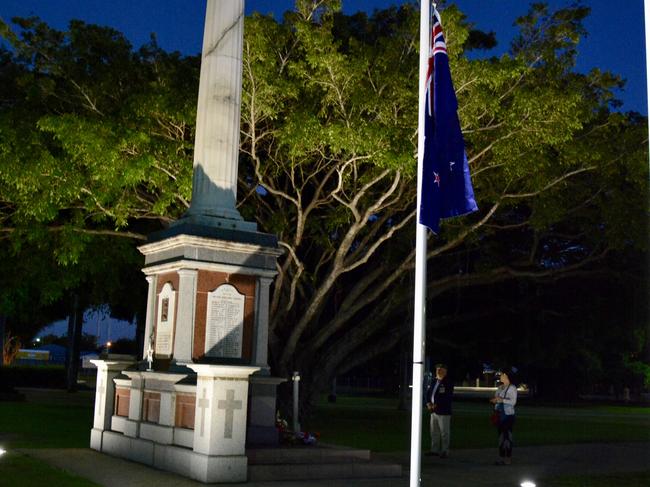
It was reported in the Mercury on October 3, 1945 that the cenotaph’s foundations were deteriorating and the Mackay Harbour Board had “buttressed” the river embankment with heavy stone facing.
More stories:
Hub for our Heroes: Number of veterans may never be known
Surf lifesavers to benefit from trauma help at Kinchant Dam
Preliminary operations for the removal of the cenotaph from River Street to its new Jubilee Park site on the Gordon Street side near the Drill Hall (demolished in 1974) began on October 10, 1945 under the control of contractor Mr D Johnstone.
It was later reported on October 25, 1945 that preparation work was under way at the new Jubilee Park site.
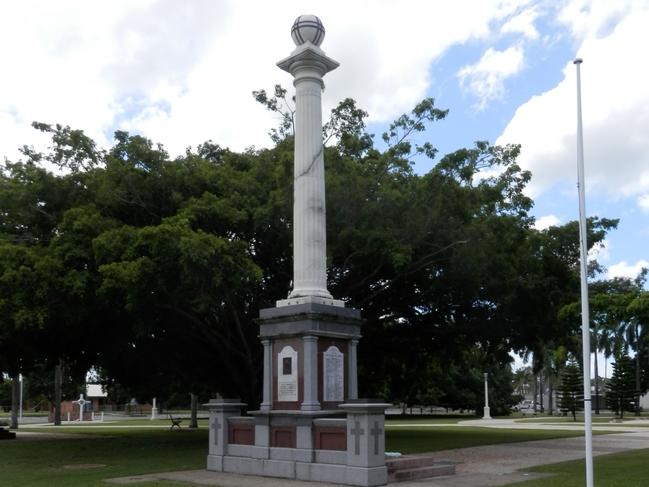
It was later reported at a meeting of the council held on December 21, 1945 that the cenotaph had been re-erected at the Gordon Street end of Jubilee Park.
The memorial was to be later relocated to its current site at the Alfred Street end in Jubilee Park during March – April 1973, to allow for construction of stage one of the Mackay Civic Centre – the council’s administration building.
More stories:
Hub for our heroes: Plans to find veterans a home in Mackay
Why Mackay should be home to a revolutionary wellness hub
‘We didn’t even have PTSD. We used to call it being ‘bomb-happy’
It was revealed in the Mercury on March 21, 1973 that reinforcing steel rods and concrete had been poured in the base of the cenotaph when it was relocated in 1945.
Mackay’s largest crane couldn’t budge the memorial, and it was reported “Mackay’s cenotaph had a firm hold on Jubilee Park”.
MCC deputy engineer Mr RW Dunn told the newspaper: “There was no reason for the reinforcing. Obviously the people who put it together did not expect it to move again.”
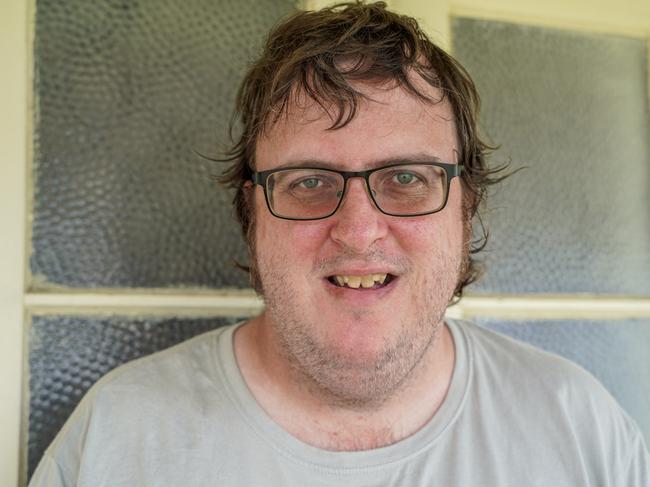
The cenotaph was finally moved when workmen drilled holes under the granite base of the monument and used explosives to shatter the bond.
Steel reinforcement rods were then cut and then the concrete foundations were blown up “to get it out”.
The first Anzac Day services were held on April 25, 1973 at the cenotaph‘s present site at Jubilee Park.
The cenotaph at Jubilee Park was later added to the Queensland Heritage Register on August 21, 1992.
Subscriber benefits:
How to activate your free Courier-Mail subscription
How to get Daily Mercury news straight to your inbox
This story about Mackay’s history was contributed by Steven Pritchard from the Mackay Historical Society. If you would like to contribute a story, click here.
Originally published as Mackay’s WWI cenotaph at Jubilee Park: Why council used explosives

